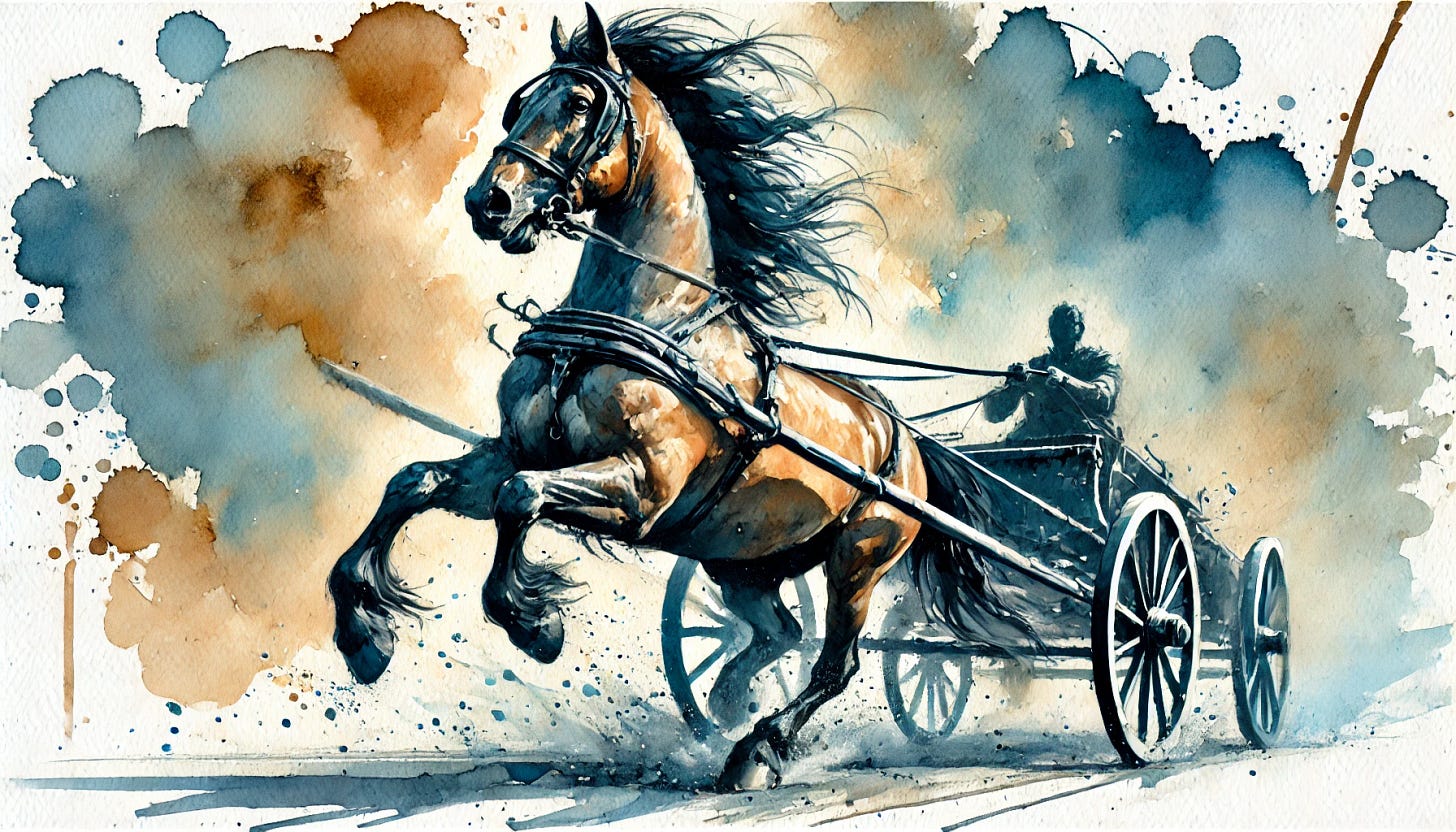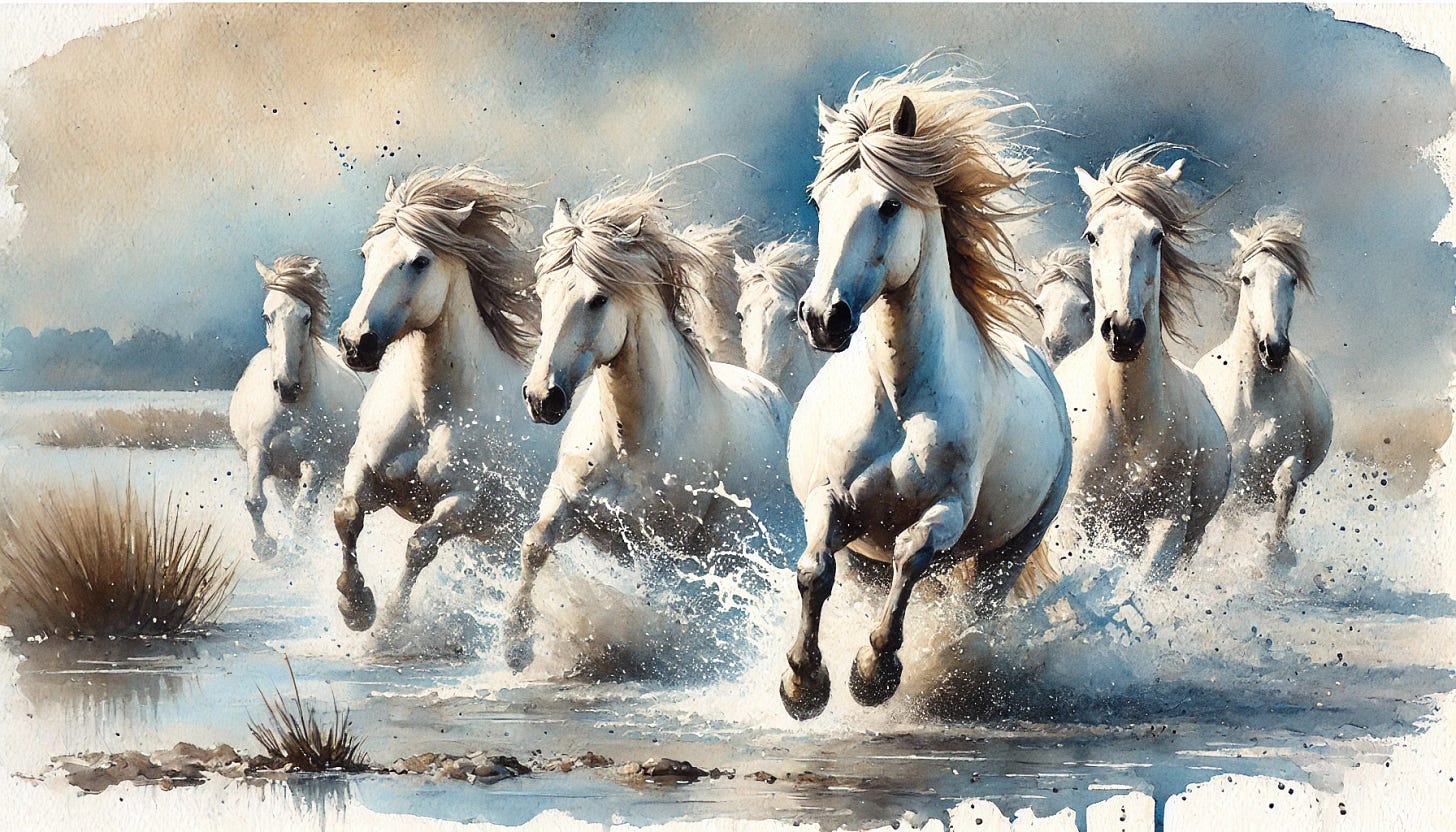Like a coach and horses: How plot and character work together to drive your story
And how to find the right balance so it won't be a bumpy ride...
What’s more important, plot or character?
I used to think that literary fiction writers believed character outweighed plot, and that writers of commercial fiction thought plot was more important. Then I heard two highly commercial thriller writers talking quite emphatically on the subject.
‘Character is king,’ Lee Child says. ‘You could have the most ingenious plot ever written, but nobody will ever know unless your characters are compelling, because readers will have given up on your book before they even get to that amazing twist you invented.’
Absolute piffle, according to Harlan Coben:
‘Most people will tell you character is more important than plot. Really? If I tell you about a book or show, do you then ask me about the character’s background? No. You want to know what the story is about.’
I think both are equally important. As Lee says,
‘Practically everybody in the world knows who Sherlock Holmes is—what he does and how he thinks. Very few of those people will be able to remember exactly what happened in any of the stories. They will have a jumble of images in their mind—“Was there one about a dog or a hound or something?”—but front and centre will be the character of Sherlock himself.’
But if the plots of Arthur Conan Doyle’s books hadn’t been any good, we’d never have been treated to The Hound of the Baskervilles or any of Conan Doyle’s 59 other Sherlock Holmes stories. And then we’d have missed the delights of Andrew Scott as Moriarty to Benedict Cumberbatch’s Sherlock.
In fact, I’d go further and say that character and plot must be inextricably linked—like a coach and horses. The coach represents the plot, the horses are your characters. A well-matched team glides effortlessly forward; a mismatched one results in chaos.
Bear with me, as we go on a short ride together, and I’ll attempt to expound on my metaphor and show how rigging up the right horse for your vehicle is going to make your story stronger and more engaging.
The Coach
Your horse-drawn vehicle is the plot that will take your reader on a journey. Different types of plot require different pacing and structure—just like different types of carriages serve different purposes—and will give your readers a thrillingly bumpy ride, or one with interesting and rich detours. A stagecoach, for instance, might suit a fast-paced thriller or adventure novel, where the journey is full of risks and action. Or imagine a Bridgerton-esque carriage complete with silk lining and footmen—this could be a more literary journey, perhaps, where the focus is on transformation, rather than speed. How about a wagon or a cart? A slow-burning, immersive epic, where the load (depth of world-building or complexity of themes) is wonderfully weighty.
Key question: Does your coach match the kind of story you’re telling?
The Horses
If the coach is the plot, the horses are the characters. Your characters provide the energy, motivation, and power to move the plot forward. Just as different horses are suited to different carriages, different character types drive different kinds of stories.
Those iconic wild white horses of the Camargue are not going to take kindly to being attached to any vehicle - they might be the equivalent of a wild-west type loner and the reader will be clinging on bareback for a fast-paced and unpredictable ride. I imagine Katniss Everdeen (Hunger Games) or James Bond (Ian Fleming’s 007) racing across the sands, manes flying.
In my psychological thriller, Bone by Bone, my main character, Laura, is a mother with a nine-year-old daughter, Autumn. Laura is isolated—she’s newly divorced, her ex-husband is out of the country, she doesn’t get on with her parents and she and Autumn have moved to Bristol where she has no friends, no support and knows no one. She’s also a vulnerable and somewhat timid person. So when she discovers that Autumn is being bullied, she wants to protect her child, but has no one to help her. She’s an ordinary mum who lacks self-confidence. All of this—the isolation, the vulnerability—make her and her daughter easy prey for the bully, and therefore, the plot (full of escalating tension and believable twists) works.
Now if I’d made Laura into a Jack Reacher style character, there would have been a severe mis-match between character and the plot. Reacher—invincible, strong, fearless and somewhat feral—would have popped the bully one, tucked Autumn under his arm and strode off into the sunset.
So character and plot have to work in sync. There is no point attaching a Shire horse, a solid, reliable plodder, suitable for slow-building narratives (think George Smiley in Tinker Tailor Soldier Spy) to a fast-paced two-wheeled chariot.
In multi-character books, you might well want mismatched teams. For instance, Frodo Baggins in The Lord of the Rings—a small, reluctant hero in an epic quest—reminds me of a short but tough Exmoor pony. He might be attached by a lead rope to the coach, led by a team of faster, larger and more charismatic characters, from Gandalf to Aragorn to Legolas.
Key question: Do your characters have the right skills, strengths, and motivations to pull your plot forward? In other words, have you matched the right horse with the right vehicle?
The best stories balance a strong plot with characters that can drive it forward. If your novel feels stuck, ask:
Is the plot demanding something your character wouldn’t naturally do?
Is your character interesting enough to sustain the plot’s weight?
As Harlan Coben says, plot is character and character is plot: ‘Focus on plot to create character.’





This article is so helpful to me!